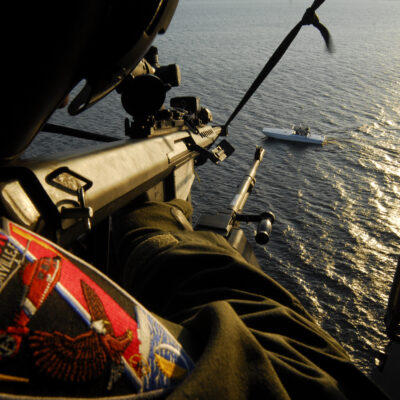
Be our service’s single provider of qualified, proficient, and well-trained shipboard and shore-side Airborne Use of Force.
HITRON Mission Statement
The mission statement above spells out the goal of the Coast Guard’s Helicopter Interdiction Tactical Squadron (HITRON). HITRON is a deploying helicopter squadron based in Jacksonville, Florida, specializing in Airborne Use of Force (AUF) for counter-narcotic operations. And HITRON is the nation’s first, and most successful, airborne law enforcement unit authorized to employ AUF.
HITRON operations started as an experiment in 1998. At that time, approximately 80 percent of all drugs entering the U.S. were arriving by sea, with drug trafficking organizations using “go-fast” boats, high speed smuggling boats capable of traveling over twice the speed of Coast Guard cutters. Realizing that the Coast Guard was stopping less than 10% of the illegal narcotics entering the United States by sea, Coast Guard Commandant Adm. James Loy directed the service to counter the “go-fast” threat.
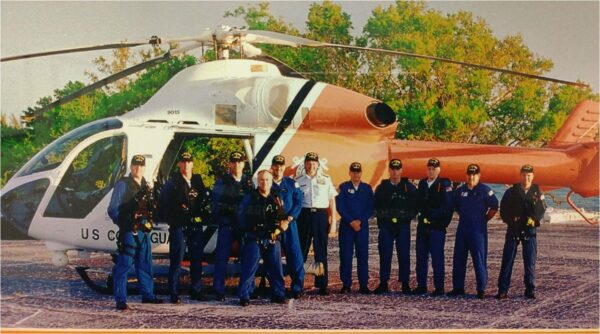
In late 1998, six Coast Guard pilots and four enlisted airmen developed tactics for armed helicopters flying from cutters to intercept the go-fasts. First, the helicopter would order the go-fast to stop. If orders to stop were ignored, a door gunner would fire warning shots across the boat’s bow with a light machine gun and, if necessary, disable the craft’s engines with a precision-fired .50-caliber rifle. Lastly, a Coast Guard pursuit-boat team deployed from the host cutter would board the disabled go-fast.
In the early “proof of concept” phase, HITRON MH-90 “Enforcer” helicopters stopped all five go-fasts they intercepted, arresting 17 drug traffickers and interdicting over 1.5 tons of cocaine and 5.5 tons of marijuana with an estimated street value of over $131 million. Due to these successful tests, the Coast Guard validated and designated HITRON a permanent Coast Guard aviation unit.
HITRON was originally designated a classified program. However, in September 1999, the existence of the unit was officially revealed. To halt the growing number of go-fast smugglers and meet the demands of cutter deployments, the squadron grew to 40 personnel and eight helicopters. And, due to federal contracting laws, the Coast Guard had to open competitive bids to choose a permanent aircraft for the mission. In late 2000, HITRON replaced its wing of MH-90s with leased high-performance Augusta A109E “Power” helicopters, re-designated MH-68A “Stingray” helicopters for HITRON.
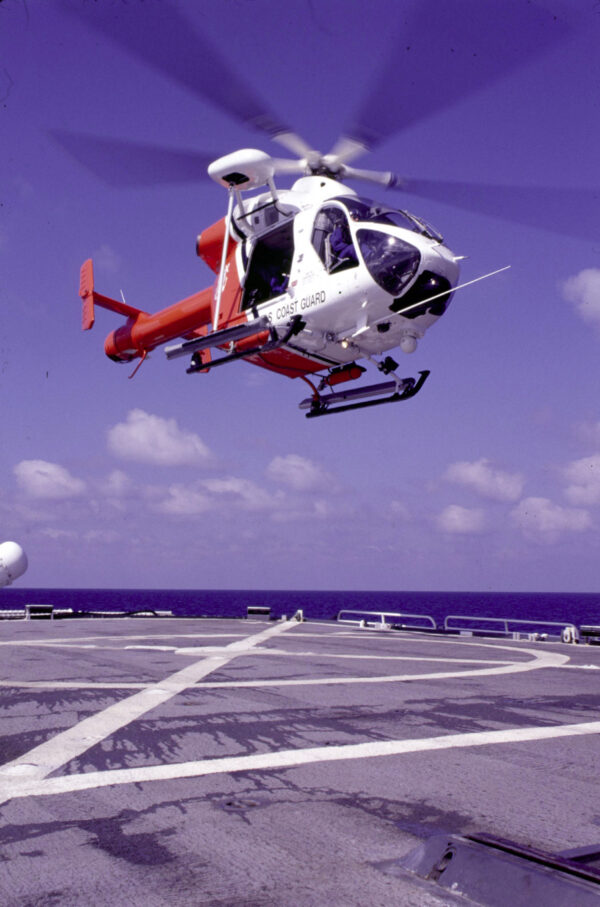
In May 2003, HITRON was formally commissioned. As a consequence of the 9/11 terrorist attacks and the Coast Guard’s move from the Transportation Department to Department of Homeland Security, HITRON was tasked with the additional mission of countering terrorist threats to the nation. DHS Secretary Tom Ridge approved the use of HITRON for armed anti-terrorism missions, noting, “The use of Coast Guard HITRON for armed aerial patrols will increase the level of security in our ports, provide an additional layer of defense, ensure the continued safe flow of commerce and deter possible acts of terrorism on our nation’s key ports.”
In early 2008, the Coast Guard allowed the lease of its MH-68A Stingrays to expire. It replaced them with the service’s standard helicopter airframe, the MH-65C “Dolphin,” providing greater aircraft availability and maintenance support. Since 2012, HITRON’s personnel and aircraft complement has grown to 12 aircraft and 264 personnel.
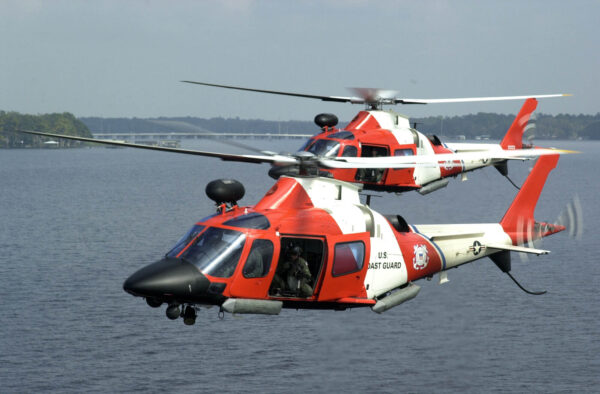
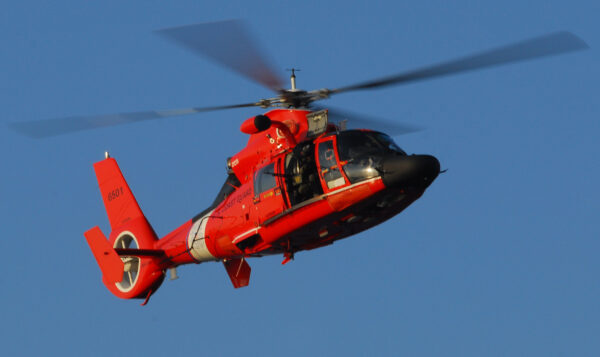
For counter-drug operations, HITRON units forward deploy on board Coast Guard cutters and allied vessels. During these deployments, go-fasts are identified by a maritime patrol aircraft, such as Coast Guard C-130s. After a patrol aircraft locates a go-fast, the HITRON aircrew launches from the cutter and proceeds to an intercept point. The helicopter then approaches the go-fast with weapons trained on the boat for self-protection. In many cases, the mere presence of an armed Coast Guard helicopter is enough to convince smugglers to stop their boats. Once over the suspect vessel, HITRON crews employ AUF tactics designed to compel suspect compliance and stop the vessel. Once the boat stops, it is boarded and searched by a surface law enforcement boarding team. If carrying drugs, the boarding team will take appropriate law enforcement action and take the smugglers and contraband into custody.
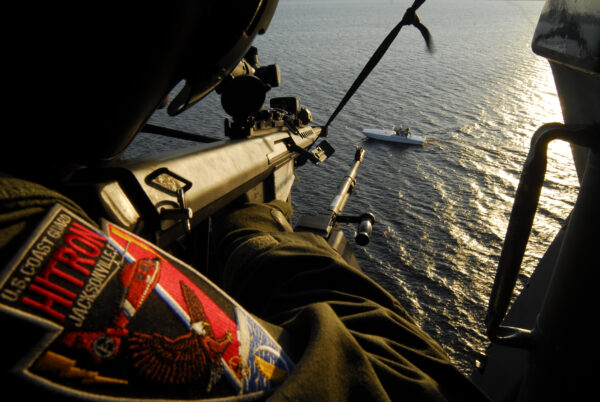
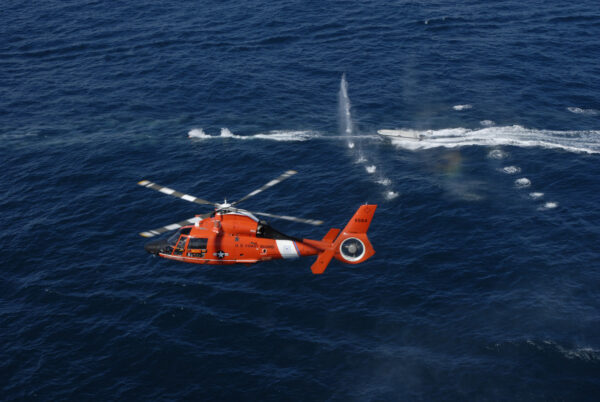
Over the past ten years, HITRON has enjoyed increasing success. By late July 2006, HITRON units had stopped 104 go-fasts, arrested 382 suspected smugglers, and seized more than 140 tons of drugs with a street value of $7.9 billion. By late 2011, HITRON had interdicted 205 vessels resulting in seizures totaling over $10 billion. Since 2014, HITRON has set new records with aircrews surpassing each previous year’s total of interdictions and seizures. For example, in fiscal year 2016, HITRON successfully stopped 83 vessels and interdicted 81 tons of cocaine valued at nearly $2.2 billion. That year, in a one 55-day deployment, a HITRON unit set a record by interdicting 13 go-fasts, resulting in the recovery of 11 tons of cocaine valued at $350 million. These 13 interdictions were the largest contributor to the Coast Guard Cutter Hamilton’s 2016 drug offload of 26.5 tons, which was the largest offload in Coast Guard history at that time.
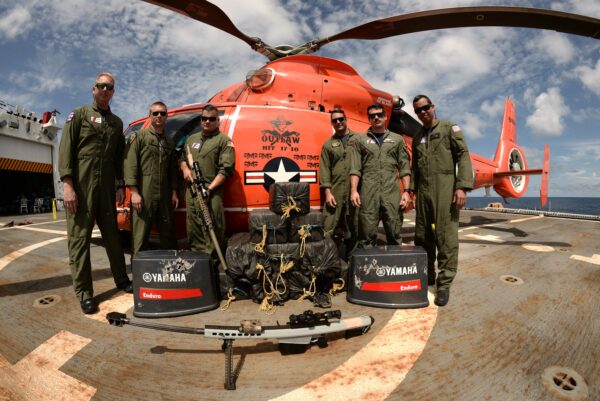
In fiscal year 2024, HITRON successfully stopped 34 vessels, detained 114 smugglers, and interdicted 52 tons of cocaine valued at nearly $1.4 billion. In just the first six months of fiscal year 2025, HITRON has already surpassed the prior year’s totals, with over $2 billion in illicit narcotics interdicted. Since the unit’s commissioning in 1999, HITRON has interdicted over $30 billion in illicit narcotics.
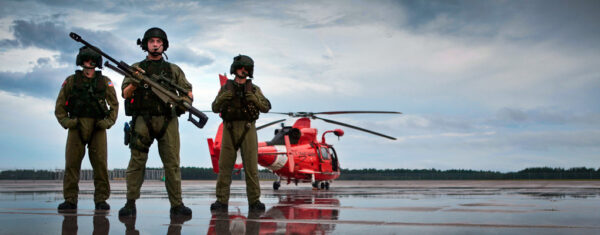
This success has reinforced the meaning of HITRON’s motto, “Force from above,” and boosted the morale of Coast Guard service members on the front lines of the battle to combat illicit drugs and transnational criminal organizations. By their aeronautical skill, AUF tactics and professionalism, HITRON aircrews have exemplified the Coast Guard’s core values of “Honor, Respect and Devotion to Duty.”
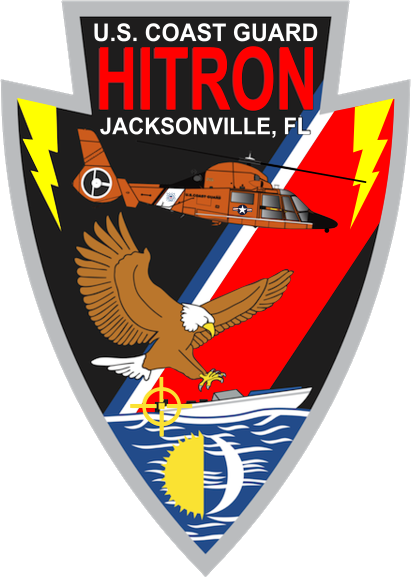
National Coast Guard Museum insider tip: Visitors to the National Coast Guard Museum will have the opportunity to learn about the evolution of HITRON and see some artifacts from the squadron in the Combatting the Illicit Drug Trade exhibit in Deck03’s Enforcers on the Seas wing.
